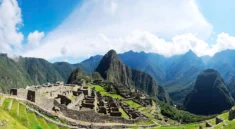
In the heart of Mexico City’s southern borough lies a vibrant and timeless experience unlike any other: Xochimilco, a UNESCO World Heritage Site that breathes with ancient rhythm and festive charm. Known as the “Venice of Mexico,” Xochimilco is a labyrinth of man-made canals dating back to Aztec times, where visitors today float on brightly painted trajinera boats, serenaded by mariachi music, surrounded by the aroma of authentic Mexican food, and immersed in a cultural celebration that has endured for centuries.
To drift along these waters is to step into a living canvas of color, music, laughter, and tradition. It’s where families gather for weekend fiestas, where couples glide past floating gardens, and where travelers seeking the true heart of Mexico discover that culture is best experienced with rhythm, flavor, and open arms.
A Living Legacy of the Aztec World
Xochimilco (pronounced So-chee-MEEL-ko) traces its origins back to the pre-Hispanic era, when the Mexica (Aztec) people engineered a system of chinampas—floating agricultural plots—that allowed them to cultivate crops on the shallow lake beds of the Valley of Mexico. These fertile islands, bordered by canals, were among the most sophisticated agricultural innovations of the time.
Today, the canals of Xochimilco are all that remain of the vast Lake Xochimilco, once connected to the larger Lake Texcoco, around which the Aztec capital Tenochtitlan was built. This unique hydraulic landscape earned Xochimilco its status as a UNESCO World Heritage Site in 1987, not just for its historical importance, but also for the vibrant cultural practices that have evolved from it.
The Trajinera Experience: Floating Parties and Local Joy
The quintessential way to explore Xochimilco is aboard a trajinera—a flat-bottomed, hand-painted wooden boat, often named after women or beloved icons like “Lupita,” “Juanita,” or “Guadalupe.” Each boat is a riot of bright primary colors and floral motifs, making the canal scene resemble a floating carnival.
A typical trajinera can carry up to 20 people, complete with a long table and benches for eating, drinking, and celebrating. Piloted by a gondolero with a wooden pole (just like in Venice), the boat meanders through the canal network at a gentle pace, inviting passengers to soak in the vibrant surroundings.
It’s common to see entire families celebrating birthdays, graduations, and weddings aboard their trajineras, often accompanied by:
- Mariachi bands floating on separate boats, ready to pull alongside and perform a heartfelt “Cielito Lindo” or “Las Mañanitas” for a fee.
- Vendors offering hot tamales, elotes (grilled corn), quesadillas, and micheladas (beer with lime, salt, and chili).
- Artisans selling handmade jewelry, colorful sombreros, and embroidered textiles directly from their boats.
- Photographers snapping portraits of couples and families against the vivid backdrop of flowers and water.
The result is an immersive, communal, and sensory-rich experience that feels more like a mobile fiesta than a tourist attraction.
A Feast of Flavors on the Water
One of the most beloved aspects of visiting Xochimilco is the chance to indulge in authentic Mexican food in a setting unlike any other. You can either bring your own picnic basket or buy freshly prepared dishes from floating food stalls. Popular options include:
- Tacos de carnitas, slow-cooked pork wrapped in warm tortillas.
- Tlacoyos, blue-corn masa pockets stuffed with beans and topped with cheese and salsa.
- Tamales oaxaqueños, wrapped in banana leaves and infused with mole.
- Agua fresca, like horchata (rice milk with cinnamon) or jamaica (hibiscus tea), to cool off on warm days.
If you’re feeling celebratory, you can also bring your own bottles of tequila or mezcal, or purchase beer and cocktails from passing vendors. It’s customary to toast with your boat neighbors and share a drink—or a song—as the spirit of Xochimilco is one of openness, joy, and camaraderie.
Music: The Soul of Xochimilco
At Xochimilco, music is not just entertainment—it’s an expression of identity and pride. Dozens of mariachi bands float on their own small boats, dressed in their signature charro suits, ready to perform a wide repertoire that spans traditional ballads, love songs, and rancheras.
You can also find:
- Norteño bands with accordions and bajo sextos.
- Marimba trios playing upbeat instrumental pieces.
- Banda ensembles bringing the brass and percussion punch of regional Mexican sound.
The lively competition between boats for the best musical act often leads to spontaneous duels of sound, with echoes of trumpets and guitars reverberating over the water. Some bands even accept requests, so if there’s a song that means something to you—be it romantic or rowdy—don’t be shy to ask.
Floating Gardens and Chinampa Culture
Beyond the festivities, Xochimilco is still home to a number of preserved chinampas, many of which are used for urban agriculture and ecological conservation. Visiting a working chinampa offers a different side of the Xochimilco experience—one of tradition, sustainability, and learning.
Several organizations and community projects now offer eco-tours that let you:
- Visit active farms growing lettuce, herbs, marigolds, and corn.
- Learn about pre-Hispanic irrigation techniques and canal maintenance.
- Participate in volunteer reforestation efforts or traditional farming workshops.
It’s also an opportunity to meet the locals who are working hard to preserve Xochimilco’s delicate ecosystem, which is threatened by urban sprawl and pollution. Through their efforts, the canals are cleaner, wildlife is returning, and cultural practices are being passed down to the next generation.
Legends and Mystique: The Island of the Dolls
For those seeking something more mysterious, a side trip to the infamous Isla de las Muñecas (Island of the Dolls) is a must. Located in the more remote corners of Xochimilco, this eerie site is covered with dozens of decaying dolls hanging from trees and fences.
The legend goes that a hermit named Don Julián Santana began collecting dolls to appease the spirit of a drowned girl he believed haunted the island. Whether you see it as creepy or compelling, the island has become a folklore destination, adding a dose of the supernatural to Xochimilco’s otherwise festive charm.
When to Visit and Tips for Travelers
- Best time to go: Weekends are the most lively, but also the most crowded. If you want the party vibe, go on a Saturday afternoon. For a more peaceful experience, choose a weekday morning.
- Duration: A typical trajinera ride lasts 1–3 hours, though longer tours can be arranged.
- Cost: Trajinera rentals are priced per boat, not per person, and rates are regulated. As of 2025, expect around 500–600 pesos/hour per boat.
- What to bring:
- Sunscreen and a hat
- Cash (for tipping musicians and vendors)
- Food and drinks if you don’t plan to buy on the water
- Camera or phone with extra battery
Xochimilco’s Role in Mexican Identity
Xochimilco is more than just a leisure destination—it’s a cultural symbol, embodying the resilience and vibrancy of Mexican identity. Its canals represent a tangible link to pre-Hispanic heritage. Its trajineras speak to the artistry and creativity of Mexican communities. And its music, food, and traditions reveal a people who celebrate life loudly, joyfully, and with deep-rooted pride.
Whether you come for the party, the history, or the peaceful ride, you leave with a new understanding of Mexico’s soul—generous, colorful, and ever flowing like the canals themselves.



